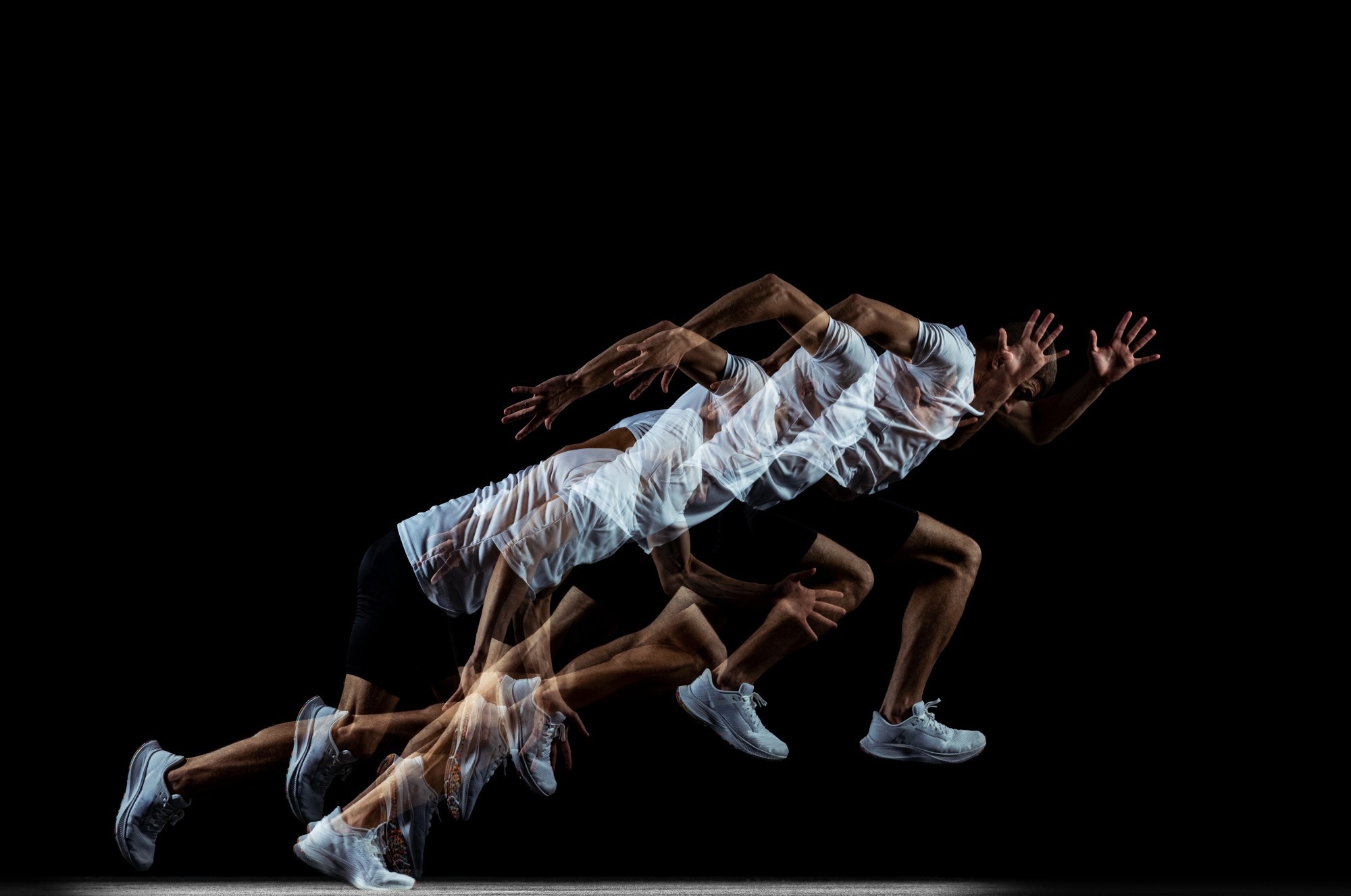In an article published in the journal PLOS One, researchers introduced AddBiomechanics, a novel method automating the quantification of human movement dynamics from motion capture data. The aim was to alleviate the manual effort involved in processing biomechanical data, enabling large-scale datasets for advancing our understanding of human motion, neuromuscular diseases, and assistive devices.
 Study: AddBiomechanics: Automated Quantification of Human Movement Dynamics from Motion Capture Data. Image credit: Anton Vierietin/Shutterstock
Study: AddBiomechanics: Automated Quantification of Human Movement Dynamics from Motion Capture Data. Image credit: Anton Vierietin/Shutterstock
Background
Large-scale datasets of human motion biomechanics hold immense potential for advancing research in understanding human movement dynamics. However, the manual processing of motion capture data, necessary for quantifying kinematics and dynamics, poses significant challenges, hindering the collection and sharing of extensive biomechanical datasets.
The present study addressed challenges in biomechanics data processing by introducing AddBiomechanics, an automated method that revolutionized the quantification of human movement dynamics from motion capture data. By employing linear methods and non-convex bilevel optimization, AddBiomechanics efficiently scaled body segments, aligned experimental markers with model markers, and computed body segment kinematics.
Unlike manual efforts, this automated approach significantly reduced processing time, providing quick and accurate determination of skeleton dimensions, motion kinematics, and dynamically consistent inertia properties. The method's innovation lay in its simultaneous optimization of body scaling, marker registration, and inverse kinematics, followed by a least-squares fit for subject mass and center-of-mass parameters.
Methods
The AddBiomechanics method was a comprehensive and automated approach for processing motion capture data in biomechanical analysis. It required a musculoskeletal model in OpenSim format, motion capture marker trajectories, and optionally, ground reaction forces. The algorithm sequentially solved optimization problems to achieve model scaling, marker registration, inverse kinematics, and inverse dynamics.
In the model scaling and inverse kinematics step, the algorithm optimized to minimize marker position errors, determining kinematic pose trajectories, body segment scaling parameters, and marker locations. If ground reaction forces were provided, the method estimated the center of mass and overall subject mass, enhancing physical accuracy. Subsequent optimizations refined the initial solution, minimizing residual forces and tuning body segment masses.
The inverse dynamics step focused on achieving physical consistency, refining body segment masses and joint kinematics. The algorithm created a robust initial guess, addressing the non-convex nature of the problem. It fit the center of mass trajectory to marker fitting results while considering observed ground reaction forces. Mitigation of acceleration artifacts and solving a dynamic fitting problem ensured the model's physical realism.
AddBiomechanics output OpenSim project files and operated as a cloud-based tool, facilitating easy adoption. Its efficiency was demonstrated by processing large datasets in minutes, significantly reducing the time compared to manual processing. The method's accuracy was validated through marker errors and residual force comparisons. By addressing challenges in biomechanics simulation, AddBiomechanics contributed to creating accurate and extensive biomechanical datasets, promoting advancements in understanding human movement, neuromuscular diseases, and assistive device design.
Study Results
AddBiomechanics demonstrated remarkable efficacy, and evaluation against expert-processed datasets revealed superior performance. In a running dataset, AddBiomechanics significantly reduced marker errors, achieving an average Root Mean Square Error (RMSE) of 1.5 cm compared to 4.3 cm in expert-processed results. It also effectively minimized residual forces and torques. The multi-activity dataset analysis showcased similar marker errors to expert processing and substantial reductions in residual forces and moments.
Moreover, when applied to synthetic walking data, AddBiomechanics accurately recovered ground truth joint angles and torques, with small errors (average 1.6 deg RMSE and 0.63 cm marker error). Importantly, it outperformed manual expert scaling, providing comparable results with significantly reduced processing time—less than 30 minutes per participant.
The cloud-based tool's user-friendly interface allows researchers to effortlessly process motion capture data without software installation. The automated approach enhanced accuracy and promoted efficiency, transforming a labor-intensive process into a rapid and accessible biomechanical analysis tool. Overall, AddBiomechanics exhibited substantial promise for advancing the field by enabling robust, automated processing of large-scale biomechanical datasets.
Conclusion
To summarize, AddBiomechanics revolutionized biomechanical analysis by automating motion capture data processing and optimizing musculoskeletal models for accuracy and physical consistency. This cloud-based tool drastically reduced processing time, making biomechanics more accessible. The method's efficacy, validated through marker errors and residual forces, positions it as a crucial resource for advancing research and creating extensive, high-quality biomechanical datasets.
Journal reference:
- Werling, K., Bianco, N. A., Raitor, M., Stingel, J. P., Hicks, J. L., Collins, S. H., Delp, S. L., & C. Karen Liu. (2023). AddBiomechanics: Automating model scaling, inverse kinematics, and inverse dynamics from human motion data through sequential optimization. PLOS ONE, 18(11), e0295152–e0295152. https://doi.org/10.1371/journal.pone.0295152, https://journals.plos.org/plosone/article/authors?id=10.1371/journal.pone.0295152